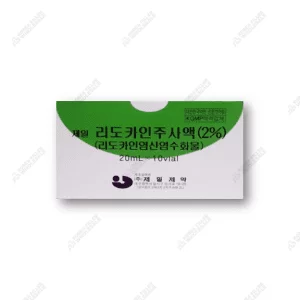Description
Main Efficiencies
- Effective Pain Management: Provides reliable and potent pain relief during medical procedures, significantly decreasing discomfort for patients and making operations more manageable.
- Rapid Onset of Action: Quickly numbs the targeted area, ensuring that patients experience minimal discomfort promptly upon application or injection, streamlining operation schedules without extended waiting periods for anesthesia to take effect.
- Versatility in Medical Settings: Can be employed across a wide range of surgical procedures, demonstrating utility and effectiveness in various operational contexts, from minor outpatient procedures to more complex surgeries.
- Improved Patient Experience: By significantly reducing pain, patients report higher satisfaction with their surgical experience, contributing positively to overall recovery and mental well-being.
- Facilitates Surgical Precision: By inhibiting the pain response, surgeons can perform procedures with greater accuracy and confidence, undisturbed by patient movements caused by discomfort.
- Safety Profile: When used correctly, it offers a safe approach to pain management in surgical settings, with a low incidence of adverse reactions, contributing to its desirability and widespread use in medical practices.
Application Areas:
This product is instrumental in medical environments where pain management is crucial:
- Surgical Procedures: Essential for a vast array of surgical interventions, from superficial to deep tissue procedures, ensuring patients remain comfortable and pain-free throughout.
- Minor Medical Procedures: Used in situations such as biopsies, catheter insertions, or cosmetic procedures, where localized pain reduction is required.
- Emergency Rooms: Critical for urgent care settings, where it can provide immediate pain relief for patients undergoing rapid interventions or treatments.
- Dental Procedures: Commonly used for dental work, including tooth extractions, cavity fillings, and root canals, enhancing patient comfort.
- Diagnostic Procedures: Helps in diagnostic assessments that may cause discomfort, such as endoscopies or lumbar punctures.
Usage Guidance:
- Administration: Should be administered by a healthcare professional familiar with the drug’s properties, including appropriate dosages, injection sites, and patient monitoring for any potential side effects.
- Pre-Procedure Assessment: Prior to its use, medical staff should evaluate patients for any contraindications, such as known allergies to anesthesia, underlying health conditions, or medications that may interact adversely with the anesthetic.
- Post-Procedure Monitoring: After the operation, patients should be observed until the anesthetic’s effects have sufficiently worn off, and they are conscious, alert, and their vital signs are stable.
- Adherence to Protocols: Medical personnel should strictly adhere to established protocols for dosage, administration, and emergency procedures to maintain patient safety and effectiveness of the anesthetic throughout its use.
Note: The specifics of use, including dosage and administration techniques, will vary based on the medical procedure, the patient’s health status, and the standard hospital or clinic protocols. These factors should be carefully considered to ensure patient safety and the efficacy of the anesthetic procedure.










Reviews
There are no reviews yet.